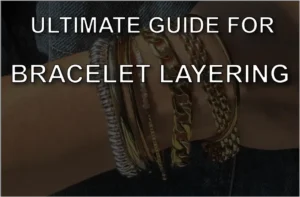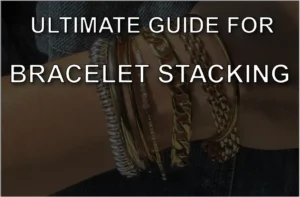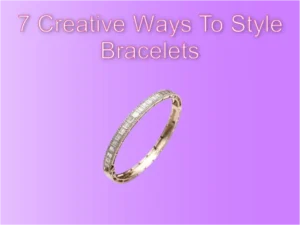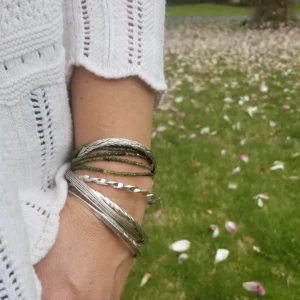Palladium Jewelry: Price, Weight, and Strength

Palladium Jewelry: Price, Weight, and Strength
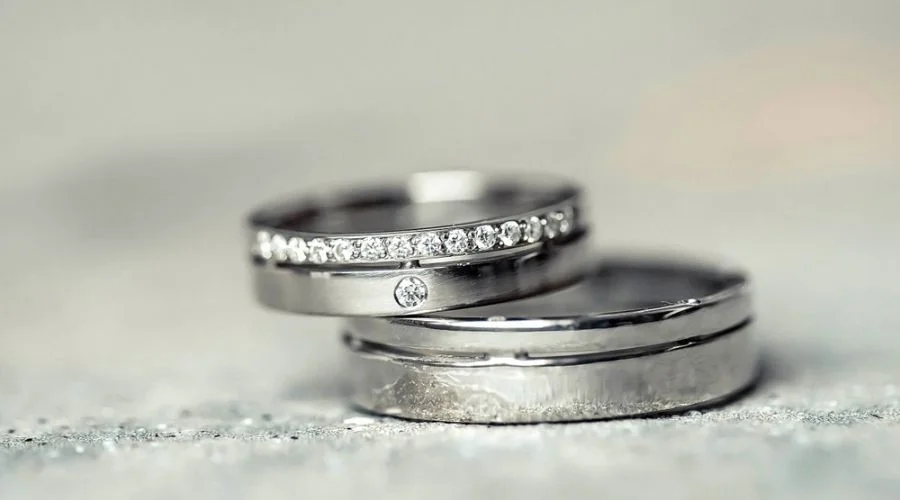
Palladium is gaining popularity in the jewelry industry for its resemblance to platinum and increasing value. It’s lightweight, scratch-resistant, and affordable. However, its rarity makes resizing difficult. Before buying, consider its pros and cons.
PALLADIUM 101: WHAT IS PALLADIUM?
Palladium is a precious metal with a silver-like appearance, discovered in 1803. It wasn’t used in jewelry until the late 1930s. Palladium and platinum look very similar, with slight visible differences. It scores 5 on the Mohs hardness scale, increasing to 5.75 when alloyed. Most palladium alloys consist of 95% palladium and 5% ruthenium.
Key Characteristics of Palladium
- Color: Silver-like
- Hardness: 5 on Mohs scale, 5.75 when alloyed
- Alloys: 95% palladium, 5% ruthenium
Key Takeaways
- Palladium: A rare, precious metal similar to platinum.
- Pros: Affordable, hypoallergenic, lightweight, and low-maintenance.
- Cons: Hard to resize, limited availability, and rare.
- Ideal for: Sensitive skin, those preferring lightweight jewelry, and budget-conscious buyers.
Palladium is unique for its blend of beauty and strength. Its use in jewelry became prominent due to its appealing aesthetics and physical properties. The metal’s natural whiteness does not tarnish, making it an excellent choice for those seeking a durable and low-maintenance option.
Close to 85 percent of all palladium happens to be used to produce car exhaust systems. It plays a role in building the parts involved in reducing the emission of toxic pollutants.
WHAT DOES “PALLADIUM” MEAN? ( Historical Context and Etymology )
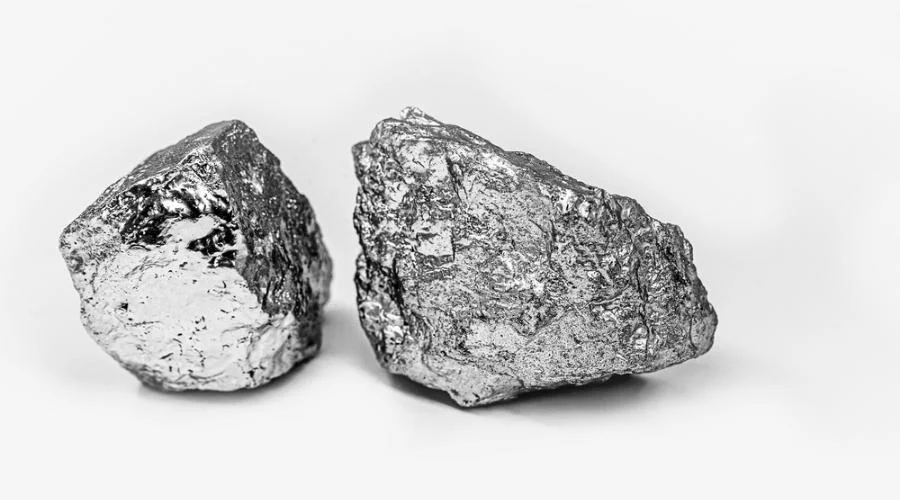
Palladium derives its name from the Greek goddess Athena, named Pallas after slaying a giant who attempted to capture Mount Olympus in a mythical battle. Afterward, they built a sculpture to protect the city of Troy from impending attacks. The metal was named after the asteroid Pallas, discovered in 1803, the same year palladium was isolated. This historical context adds a layer of intrigue and allure to palladium jewelry, linking it to ancient mythology and astronomical discoveries.
TYPES OF PALLADIUM RINGS
Palladium is commonly used for wedding bands and engagement rings, available in various finishes like hammered, matte, high polish, textured, and brushed. Due to its rarity, stores often have limited styles.
Despite the fact there are a plethora of finishes available in palladium, due to how rare it is, stores and sellers are likely to have only a few options available in palladium. Ironically, palladium was considered a worthless by-product of platinum mining. However, now it is one of the most valuable metals around today.
PALLADIUM ALLOYS: PALLADIUM WHITE GOLD & PALLADIUM STERLING SILVER
In your search, it’s not uncommon to happen upon metals like palladium white gold or palladium sterling silver. These refer to white gold or silver alloys with a considerable amount of palladium.
- Palladium White Gold: Contains 58% gold, budget-friendly.
- Palladium Sterling Silver: Combines silver with palladium for added durability.
Variety of Finishes
Palladium rings come in several finishes, each offering a unique look:
- Hammered: A rustic, textured appearance.
- Matte: A non-reflective, modern look.
- High Polish: A shiny, mirror-like finish.
- Textured: Various patterns for added character.
- Brushed: A soft, satiny texture.
PALLADIUM RINGS: PROS AND CONS
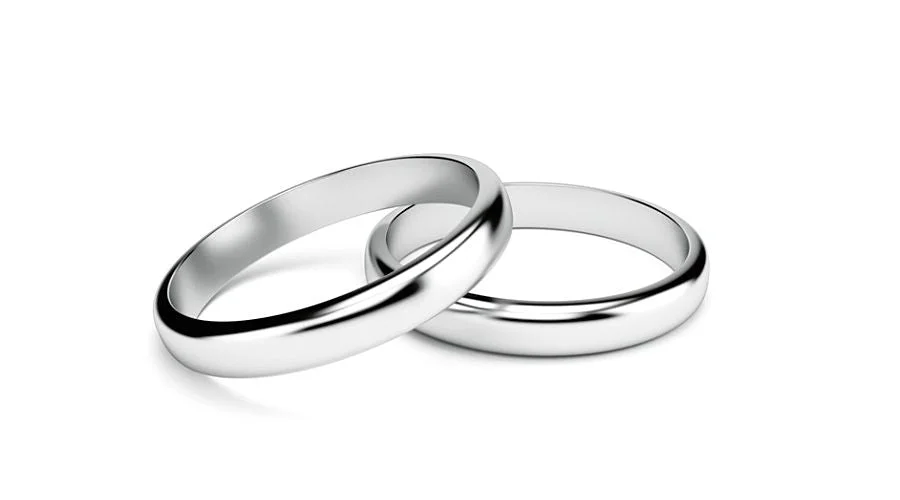
Here are the advantages and disadvantages of choosing palladium.
PROS OF PALLADIUM RINGS
Palladium has numerous benefits as a jewelry metal.
- Precious Metal: Used in jewelry since the 1930s, hallmarked since 2010.
- Affordable: Generally cheaper than platinum, despite occasional price spikes.
- Easily Maintained: Retains natural color, develops a matte look over time, low-maintenance.
- Hypoallergenic: No nickel content, lower risk of allergic reactions.
- Lightweight: Comfortable for daily wear, especially for those not used to heavy jewelry.
- Strong and Durable: Tarnish-resistant, scratches develop into a unique patina without affecting color or luster.
Palladium’s affordability makes it an attractive alternative to more expensive metals like platinum. Its hypoallergenic properties make it suitable for individuals with sensitive skin. Moreover, the metal’s lightweight nature ensures comfort for those who prefer not to wear heavy jewelry.
CONS OF PALLADIUM RINGS
Take these potential shortcomings into consideration before you make a purchase.
- Rarity: 30 times rarer than gold, making it unique but limited in style options.
- Lightweight: Preference-based; some may prefer heavier metals.
- Difficult to Manipulate: Hard to resize and less commonly used by jewelers.
The rarity of palladium can be a double-edged sword. While it ensures uniqueness, it also limits availability and style variety. Additionally, the difficulty in resizing palladium rings may pose a challenge for those whose ring size changes over time.
Care and Maintenance of Palladium Rings

Maintaining palladium jewelry is straightforward due to its durability. Here are some tips:
Storage
- Separate Jewelry Box: Keep in a separate jewelry box to avoid scratches from other pieces.
Cleaning
- Mild Soap and Water: Use a mild soap and water solution with a soft cloth or toothbrush. Dry with a microfiber cloth.
- Commercial Cleaners: Suitable for palladium, ensuring it retains its natural shine.
Professional Cleaning
- Annual Check-up: Opt for a professional cleaning once a year to maintain its luster and polish.
Avoiding Damage
- Remove During Chores: When performing chores or other rugged tasks, remove your ring to avoid chemical exposure.
- Gentle Handling: Handle with care to prevent unnecessary scratches and maintain its pristine condition.
Buying Guide for Palladium Rings
Palladium ring prices vary based on stone size but generally start around $2,000. It complements any setting style, from bezel-set to prong. Work with a trusted jeweler for custom designs.
Price Considerations
- Stone Size: Larger stones increase the overall cost.
- Design Complexity: Intricate designs may also raise the price.
Style Options
Despite the limited availability, palladium rings can be found in various styles. Popular choices include:
- Classic Bands: Simple and elegant.
- Engagement Rings: Often paired with diamonds or other precious stones.
- Custom Designs: Work with a jeweler to create a unique piece.
Choosing a Jeweler
- Reputation: Select a jeweler with a good reputation and positive reviews.
- Experience: Ensure the jeweler has experience working with palladium.
- Custom Work: Opt for a jeweler who offers custom design services if you have a specific style in mind.
Though the style options are limited and palladium is rare, you can still find retailers selling it. Work with a jeweler you like and trust if you want a custom palladium ring.
Comparison with Other Metals
To help you make an informed decision, here’s a comparison of palladium with other popular metals used in jewelry:
| Metal | Color | Hardness (Mohs) | Price | Weight | Hypoallergenic | Maintenance |
| Palladium | Silver-like | 5 – 5.75 | Affordable | Lightweight | Yes | Low-maintenance |
| Platinum | White | 4 – 4.5 | Expensive | Heavy | Yes | Regular polishing |
| 14k White Gold | White | 3.5 – 4 | Moderate | Moderate | No | Rhodium plating |
| Silver | Silver | 2.5 – 3 | Low | Lightweight | No | Tarnishes easily |
CLOSING NOTES
Palladium is an excellent choice for those seeking affordable, hypoallergenic, lightweight, and durable jewelry. Its rarity and resizing difficulty are notable drawbacks. If you find a style you love, palladium offers a stunning alternative to platinum. Choose palladium if you prefer a cost-effective, low-maintenance metal for your wedding or engagement ring.
Buy palladium rings if you have sensitive skin and need a hypoallergenic metal. Additionally, choose palladium if you don’t like heavy rings and want a cost-effective option for your wedding band or engagement ring.
Related Posts
Recent post
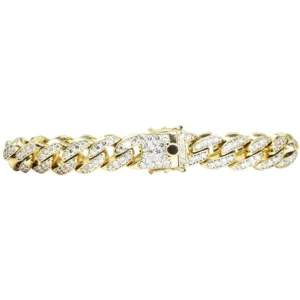
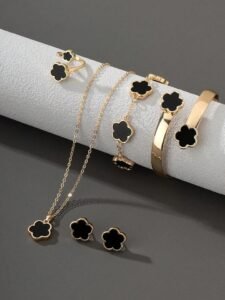
The Original Clover Bracelet: A Timeless Piece of Luxury Jewelry

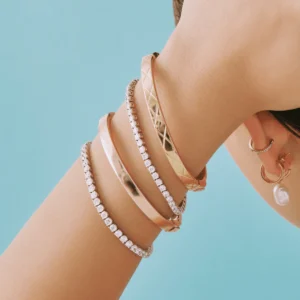
Hinge Bracelets: Your Ultimate Guide to Style and Functionality
